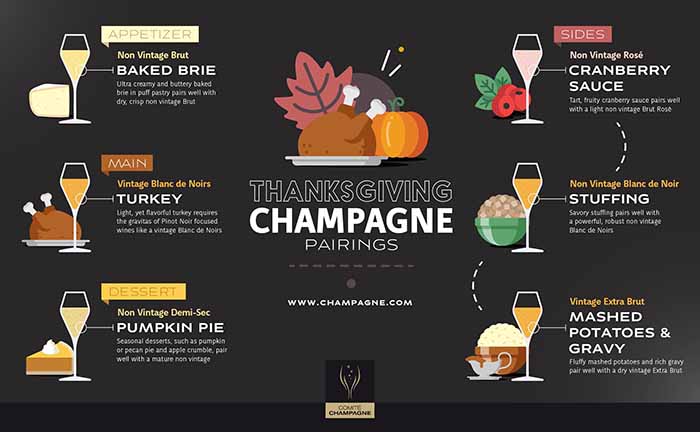|
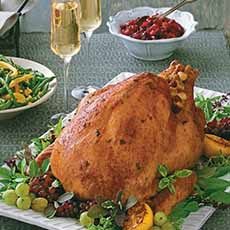
[1] This turkey is actually basted with Champagne as well. Here’s the recipe from Taste of Home. It takes two cups of Champagne or other sparkling wine.
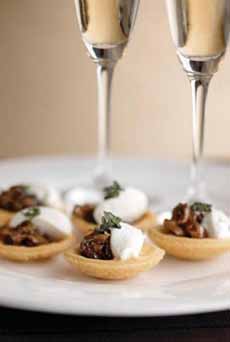
[2] Start the dinner with bubbly, starting with the hors d’oeuvres. Here’s more from Good Food (photo © Good Food | Marina Oliphant).
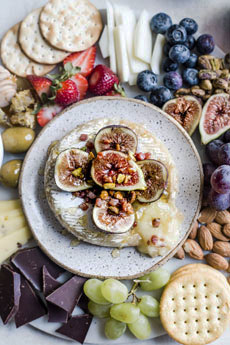
[3] A popular appetizer, Baked Brie, is delicious with Champagne. Here’s the recipe (photo © The Almond Eater).
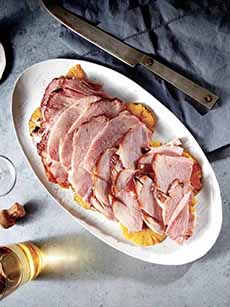
[4] You can glaze your ham with Champagne or other bubbly. Here’s the recipe (photo © Cooking Light | Jennifer Causey).
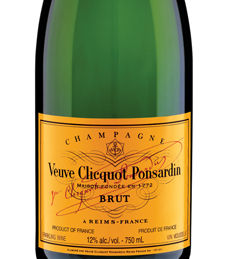
[5] Brut Champagne is the most commonly-purchased style, but it’s too dry and acidic to go well with desserts (photo © Veuve Clicquot).
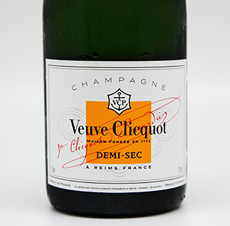
[6] Ready for dessert? Look for a demi-sec Champagne, which has more residual sugar to match the sweetness of the dessert (photo © Veuve Clicquot).
|
|
Some people like red wine, and some people like white wine.
But a bottle of sparkling wine can see you through an entire meal, even if that meal is Thanksgiving.
Last week we covered red and white wine pairings: the different wines that go with each course of your Thanksgiving dinner.
But what if you did something very elegant: serve Champagne with every course?
Different styles of Champagne have different levels of sugar, body, and other qualities that make different styles and sweetnesses pair best with different courses.
The Champagne Bureau USA has developed a chart (below) to show how different types of Champagne pair with each dish of the meal.
We’ve added an explanation of the different levels of sweetness, the styles based on grapes used, and the grapes themselves.
Consider this article to be a primer on Champagne that you can use year-round.
THE SEVEN LEVELS OF SWEETNESS IN CHAMPAGNE
Champagne is made in seven styles, or levels, of sweetness. The sweetness comes from a step in the secondary fermentation of Champagne, when the bubbles are created.
The process is called dosage (doe-SAZH): A small amount of sugar is added to the wine bottles before they are corked. The sugar also reduces the tartness/acidity of the wine.
This process is unique to sparkling wine (although not all sparkling wines use this technique). Don’t like geeky information? Skip these two bullets.
Primary Fermentation Of Champagne: In the classic méthode champenoise used to make Champagne, Cava and American sparkling wines, the primary, or alcoholic, fermentation of the wine transforms the grape must (the pressed juice of the grapes) into wine. Natural yeast consumes the natural grape sugars, producing alcohol and carbon dioxide.
Secondary Fermentation Of Champagne: To create a secondary fermentation, the dosage is added to the wine. The the added yeasts eat the added sugar, again creating alcohol and carbon dioxide.
The Levels Of Sweetness
Based on the amount of sugar in the dosage, the seven levels of sweetness based on residual sugar (what’s left after the secondary fermentation) are:
Brut Nature/Brut Zero: 0-3 g/l* residual sugar
Extra Brut: 0-6 g/l residual sugar
Brut: 0-12 g/l residual sugar
Extra Dry†: 12-17 g/l residual sugar
Dry: 17-32 g/l RS residual sugar
Demi-Sec: 32-50 g/l residual sugar
Doux: 50+ g/l residual sugar
THE STYLES OF CHAMPAGNE
Blanc de Blancs: A Blanc de Blancs Champagne is made entirely from white grapes. The vast majority will be Chardonnay, which adds acidity and structure. A Blanc de Blancs will be lighter and racier than a Blanc de Noirs, a blend of black and white grapes. Blanc de Blancs blending grapes include Arbane, Petit Meslier, and Pinot Blanc.
Blanc de Noirs: The translation is “white wine made from black grapes. The black grapes used in Champagne are Pinot Noir, Pinot Meunier, or a blend of the two. Just as a Pinot Noir is richer than a Chardonnay, a Blanc de Noirs is richer, more aromatic, and [often] more complex on the palate than a Blanc de Blancs.
Non-Vintage Champagne (NV): Non-Vintage Champagne is a blend of three to five harvests, blended to create a “house style” that is consistent from year to year. This is done to even out the grape qualities of different harvests. There is no year on the label, but NV is still top-quality Champagne. It’s ready to drink when released, whereas vintage Champagne needs to be laid down to evolve.
Prestige Cuvée. This is the house’s top-of-the-line bottling. The grapes are selected from the appellation’s best-situated vineyards and the wine is the most expensive, often with special packaging. While some prestige cuvées are also the producer’s vintage release, in some instances the “best of the best” grapes from the best vineyards are bottled into their own prestige cuvée. For example, while Pol Roger makes a non-vintage and vintage wine, they also make Cuvée Winston Churchill in the best-of-the-best vintage years. In most cases, a prestige cuvée is a premium Vintage Champagne, but a few producers do make a non-vintage prestige cuvée.
Rosé: Rosé Champagne is made by blending in some local red wine—between 5% and 20%. The more red wine that is used, the darker the hue of the rosé. Most Rosé Champagnes are made from a blend of Chardonnay and Pinot Noir.
Vintage Champagne: The grapes are all from a single harvest, and made 100% from the year indicated on the label. To declare a vintage year, a Champagne must be aged longer before bottling. Their complexity demands that the bottles be held before drinking: a minimum of 10 years after the vintage date, in order to get the complexity of the wine. Twenty years of age is even better, and the Champagne still shows its breeding at even 50 years of age. Vintage Champagnes represent less than 5% of production
THE GRAPES OF CHAMPAGNE
By law, seven grape varieties can be used to make Champagne. The two major grapes are Chardonnay and Pinot Noir.
Chardonnay provides acidity and structure. Pinot Noir adds elegance, perfume, and body.
Small amounts of other grapes can be used for blending, to achieve specific qualities in the Champagne. All of them add a bit of complexity in their own way.
The five permitted blending grapes are [source]:
Arbanne adds rusticity to the blend.
Fromenteau adds fruitiness, body and richness. It is closely related to Pinot Gris.
Petite Meslier has a greenness that some find similar to Sauvignon Blanc. It can counter excessive ripeness in hot years.
Pinot Blanc adds fruit, richness, and fruity and/or honey aromas.
Pinot Menuier adds backbone, length of the finish, tannin and fruit on the palate, and an aroma of wild berries.
________________________________________
*Grams per liter.
†It’s a paradox in the Champagne industry that “dry” indicates a sweeter wine; as do sec (which means dry in French) and demi-sec. Doux, the sweetest style of Champagne, does mean sweet.
|
